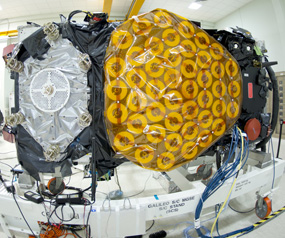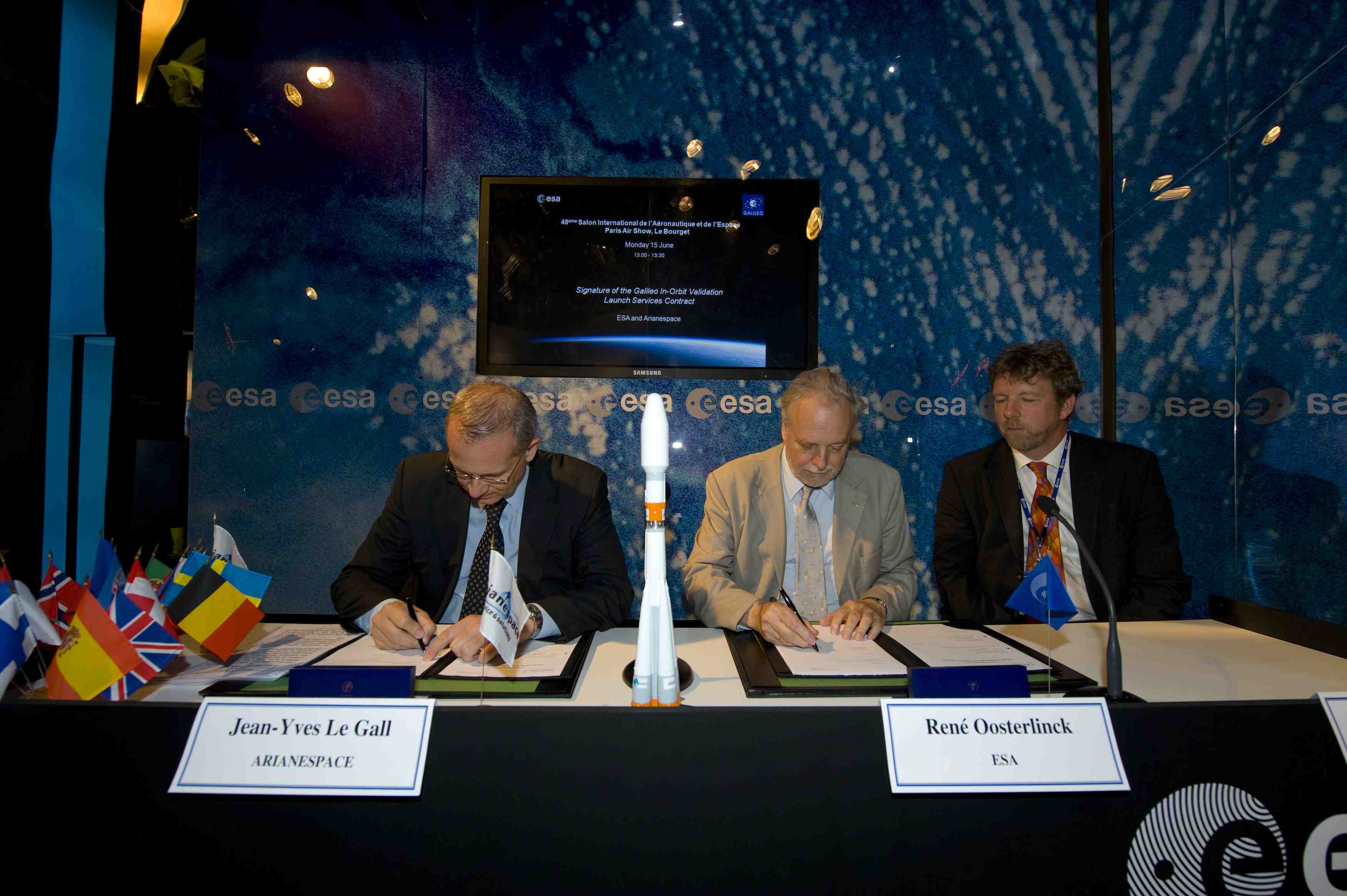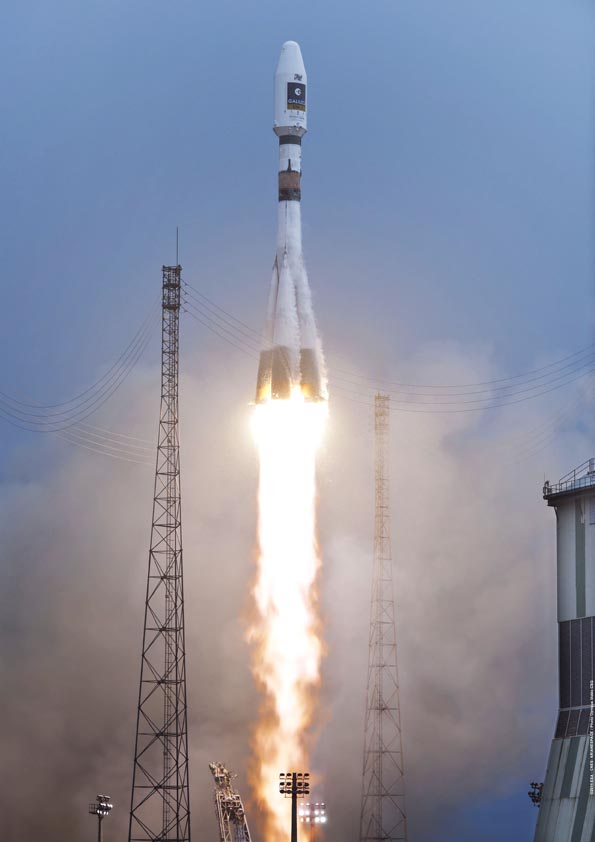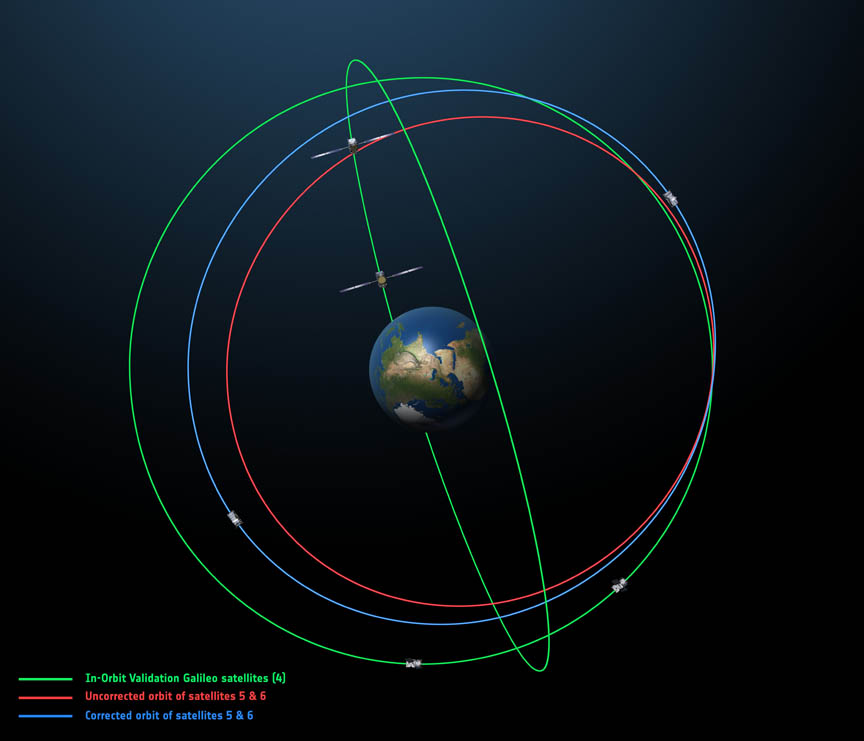 The Galileo In-Orbit Validation (IOV) ProtoFlight Model (PFM) and Flight Models (FM-2, FM-3 and FM-4) undergoing assembly and testing at Thales Alenia Space’s facility in Rome during May 2011. ESA – S. Corvaja
The Galileo In-Orbit Validation (IOV) ProtoFlight Model (PFM) and Flight Models (FM-2, FM-3 and FM-4) undergoing assembly and testing at Thales Alenia Space’s facility in Rome during May 2011. ESA – S. CorvajaThe first Galileo navigation satellite arrived Wednesday (September 7, 2011) in Europe’s Spaceport in French Guiana, ready to begin preparations for launch on 20 October.
Packed within its protective, air-conditioned container, the satellite — known as Known as Flight Model 2, or FM2 — landed at Cayenne Rochambeau Airport aboard an Antonov aircraft, having departed from Thales Alenia Space Italy’s Rome facility, where it was built.
The first Galileo navigation satellite arrived Wednesday (September 7, 2011) in Europe’s Spaceport in French Guiana, ready to begin preparations for launch on 20 October.
Packed within its protective, air-conditioned container, the satellite — known as Known as Flight Model 2, or FM2 — landed at Cayenne Rochambeau Airport aboard an Antonov aircraft, having departed from Thales Alenia Space Italy’s Rome facility, where it was built.
A Thales and ESA team stood ready to receive it, having flown into French Guiana the previous week, along with all the testing and support equipment. The team loaded the satellite container on a lorry for transport to the Guiana Space Center, where it was moved into the preparation facility.
The satellite is due to be launched aboard a Soyuz ST-B vehicle on 20 October, together with a second Galileo that is now being readied for its own flight to French Guiana. This will be the first launch of Russia’s Soyuz rocket from French Guiana and the first Soyuz launch from a spaceport outside of Baikonur in Kazakhstan or Plesetsk in Russia.
Next year, the second pair of in-orbit validation (IOV) satellites will join them in orbits at 23,222 kilometers (14,429 miles) altitude to demonstrate the design of the Galileo system in advance of another 26 satellites planned for the Galileo constellation.
The two Soyuz ST-B launchers — the more powerful variant of the two configurations of the upgraded Soyuz-ST launcher operated by Arianespace from the CSG — plus the reignitable Fregat-MT upper stages that will guide the satellites into their final orbits reached French Guiana from Russia in June.
Final assembly of the three-stage Soyuz ST-B and the fuelling of the Fregat-MT upper stage will start next week, well in time for the launch date.
These first four Galileo satellites, built by a consortium led by EADS Astrium Germany, will form the operational nucleus of the full Galileo GNSS constellation. Originally planned for completion in 2008, the fully operational capability (FOC) constellation is now expected to be available in the 2016–17 timeframe.
Galileo’s definition, development, and IOV phases were carried out by the European Space Agency (ESA) and co-funded by ESA and the European Community, with political direction via the European Commission.





